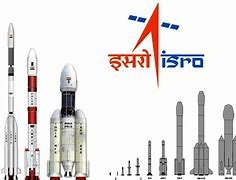
Minutes after revealing the names of four astronauts for the Gaganyaan Mission, Prime Minister Narendra Modi stated on Tuesday that the country will have its own space station by 2035, which will aid in the exploration of unexplored areas. He stated that India will also send astronauts to the moon by 2040. PM Modi told a gathering at the Vikram Sarabhai Space Centre (VSSC) in Thiruvananthapuram that Indian astronauts will land on the moon using their own rocket.
“By 2035, India will have its own space station in orbit, allowing us to investigate the vast expanse of space. During Amrit Kaal, Indian astronauts will arrive on the moon’s surface using their own rocket,” according to the Prime Minister.
He also stated that India is developing as a vibrant global participant in the twenty-first century, with tremendous developmental leaps being made in all areas.
“India of the twenty-first century is now stunning the world with its potential. We have launched almost 400 satellites in the previous ten years, compared to only 33 satellites ten years ago,” the Prime Minister noted.
PM Modi expressing his satisfaction in Gaganyaan expedition
PM Modi also expressed his satisfaction that the equipment utilised in the Gaganyaan expedition is primarily built in India.
“I was very pleased to learn that the majority of the equipment used in Gaganyaan is made in India.” What a wonderful coincidence that while India rises to become the world’s third largest economy, India’s Gaganyaan is also poised to propel our space sector to new heights,” the Prime Minister stated.

PM Modi also announced the names of all four astronauts who would be a part of India’s first human space mission programme, Gaganyaan, which is set to fly in 2024-25. According to ISRO, the Gaganyaan project aims to demonstrate human spaceflight capabilities by sending a crew of three people into a 400-kilometer orbit for a three-day trip and safely returning them to Earth by landing in Indian sea waters.
Pre-requisites for the Gaganyaan mission include the development of many critical technologies, such as a human-rated launch vehicle for safely transporting crew to space, a Life Support System to provide an earth-like environment for crew in space, crew emergency escape provision, and evolving crew management aspects for crew training, recovery, and rehabilitation.
The four selected Indian Air Force pilots include Group Captain Prashanth Nair, Group Captain Ajit Krishnan, Group Captain Angad Pratap, and Wing Commander Shubhanshu Shukla. The four astronauts received training at the Yuri Gagarin Cosmonaut Training Centre in Russia.
“I am delighted that today I was able to meet these astronauts and present them to the country. I’d want to congratulate them on behalf of the entire country. You are the pride of modern India… These are not simply four names and four people, but four forces pursuing 140 crore goals for space. After 40 years, an Indian is about to journey into space. But this time, the time, the countdown, and the rocket are all ours,” the Prime Minister stated.
“India’s success in the space sector is sowing the seeds of scientific temperament in the country’s young generation,” Prime Minister Modi stated during his speech at the Vikram Sarabhai Space Centre.
Ensuring the safety of the astronauts

Several precursor missions are planned to demonstrate the Technology Preparedness Levels before the real Human Space Flight mission. These demonstration missions include of Integrated Air Drop Test (IADT), Pad Abort Test (PAT), and Test Vehicle (TV) flights. The safety and dependability of all systems will be shown in unmanned missions prior to manned operations.
The launch vehicle for the Gaganyaan mission has been designated as the ISRO LVM3 rocket, a well-proven and dependable heavy lift launcher.
Human safety is vital in the Gaganyaan mission. To accomplish this, a variety of new technologies, including engineering and human-centric systems, are being created and implemented.
During his visit to Kerala, Prime Minister Narendra Modi evaluated the progress of the Gaganyaan mission and gave ‘astronaut wings’ to the astronaut-designates at the Vikram Sarabhai Space Centre. The Gaganyaan mission is India’s first human space travel programme, and considerable preparations are now ongoing at several ISRO sites.
According to ISRO, the Gaganyaan project aims to demonstrate human spaceflight capabilities by sending a crew of three people into a 400-kilometer orbit for a three-day trip and safely returning them to Earth by landing in Indian sea waters.











Comments 1